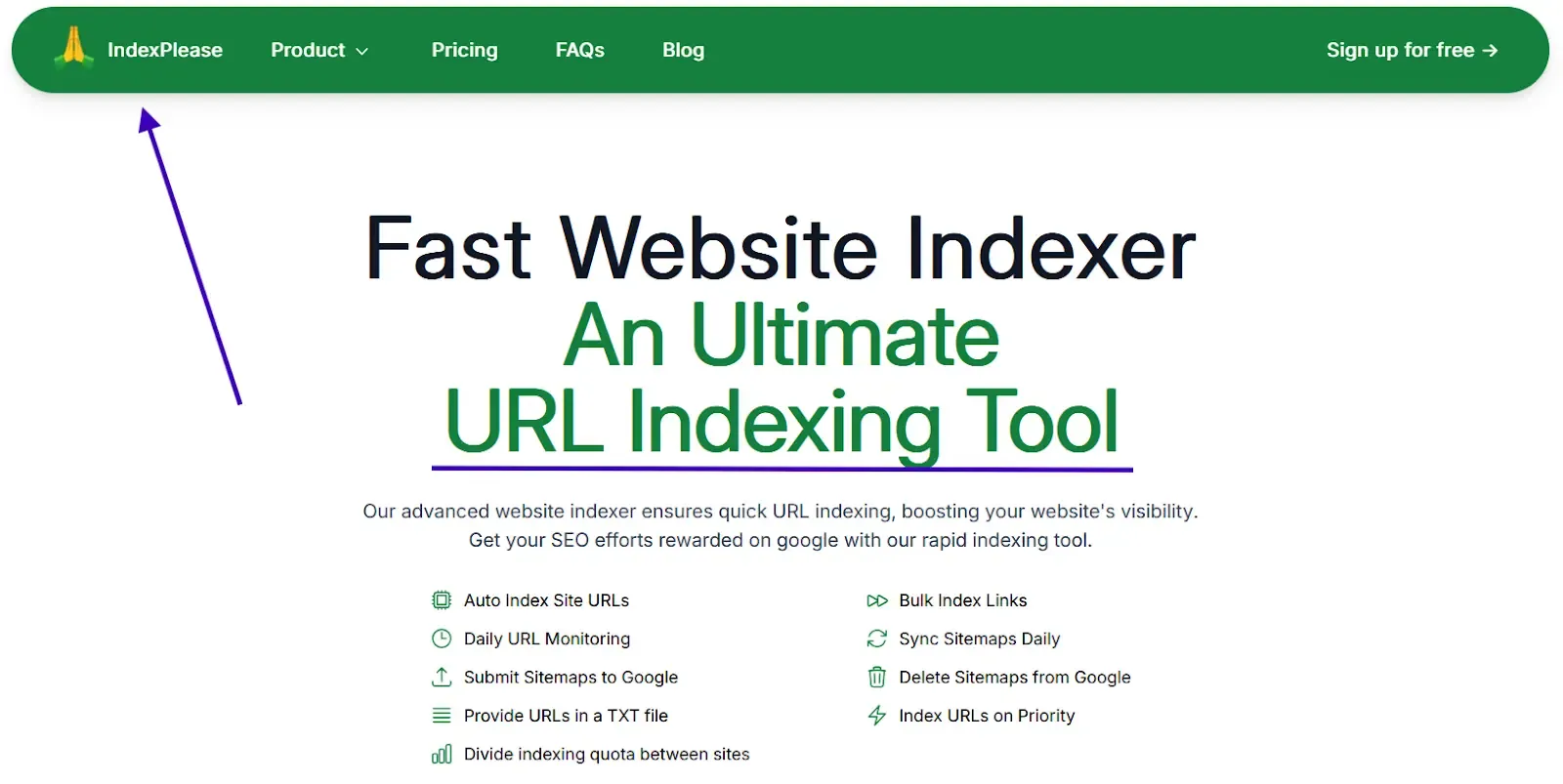
How to get your Ghost blog indexed on Yandex in 2025
Yandex isn’t just “Russia’s Google” anymore. In 2025, it commanded 62% of search traffic in Russia, 48% in Kazakhstan and 39% in Uzbekistan. With YandexGPT-powered answer boxes now dominating 23% of SERPs (similar to Google’s Featured Snippets), ignoring this engine means leaving high-intent traffic on the table.
But here’s the problem: Ghost CMS users struggle with Yandex indexing. Unlike WordPress, Ghost lacks native integrations for Yandex Webmaster or Turbo Pages. Only 34% of Ghost blogs appear in Yandex’s top 100 results vs. 61% of WordPress sites.
What is indexing?
Indexes are formed after search engines crawl your blog, analyze it and store relevant information for future reference. Every time a blog is indexed more effectively, it increases the chances of appearing in search results. Higher visibility in search results leads to more site visitors which helps in increasing traffic organically.
Let’s dive into the technical, cultural and strategic nuances of making YandexBot love your Ghost site.
Understand YandexBot’s Crawl & Ranking Stack

YandexBot operates on a hybrid crawl model:
- TURBO Pages: Lightweight HTML versions (like AMP) that load in 0.8s on average.
- MatrixNet 2025: Their AI ranking system prioritizes UX signals (INP, LCP) 37% more heavily than Google.
- Vega 2.0: A query understanding engine that leans heavily on Cyrillic morphology.
Key Insight: YandexBot crawls differently than Googlebot.
- It’s less tolerant of duplicate content. Yandex penalized 42% of pages with conflicting canonicals, vs. Google’s 19%.
- It prioritizes fresh content via IndexNow (adopted by Yandex in 2023).
Pro Tip: Use IndexPlease’s IndexNow API integration to ping Yandex within seconds of publishing, Ghost’s native webhooks can’t do this.
Optimize Ghost for Yandex’s Language and Structure Rules

Yandex isn’t just a search engine, it’s a cultural gatekeeper. To rank here, you need to speak its language (literally) and play by its technical house rules. But don’t worry: You don’t need a computer science degree to nail this. Here’s how to align your Ghost blog with Yandex’s preferences without drowning in code.
A. Simplify Your URLs for Cyrillic Readers
YandexBot crawls URLs like a librarian organizing books , messy titles get ignored. If your audience speaks Russian, Kazakh or Uzbek, your URLs should reflect their language.
Why this matters: Yandex prioritizes URLs with Cyrillic characters in its “Vega 2.0” algorithm, which interprets search intent through a Russian-language lens. A 2024 Yandex study found that pages with Cyrillic slugs saw 53% higher CTR in local SERPs.
Ghost Fix: Use plain-language Cyrillic slugs in your posts. Ghost’s SEO settings let you customize URLs, no coding required. Just avoid symbols (#, %, $) and keep them under 60 characters.
B. Declare Your Language (Without Overcomplicating It)
Yandex cares deeply about linguistic context. If your blog targets Russian speakers, you need to explicitly tell YandexBot: “This content is for you.”
The Right Approach:
- Add a language tag to your Ghost theme.
- Avoid regional variants like ru-RU (for Russia) or ru-KZ (Kazakhstan). Yandex lumps all Russian-language content into one bucket.
C. Avoid the Duplicate Content Trap
Yandex is ruthless with duplicate content. A single formatting mistake, like having both /blog-post and /blog-post/ (with a trailing slash), can split your SEO power.
The Silent Killer: Ghost automatically adds trailing slashes to URLs by default. Yandex sees /post and /post/ as two separate pages, diluting your rankings.
Simple Fix:
- Choose one URL format (with or without slashes) and stick to it.
- Use a redirect tool (many Ghost hosting providers offer this as a 1-click fix) to enforce consistency.
D. Let YandexBot Roam Freely
YandexBot crawls differently than Google. It’s pickier, slower and easily confused by technical roadblocks.
3 Rules to Live By:
- Don’t block CSS/JS files: YandexBot needs to render pages like a real user.
- Avoid session IDs in URLs: Parameters like ?ref=facebook can create infinite duplicate pages.
- Skip the “Crawl Delay” myth: Yandex ignores this robots.txt command.
Ghost Advantage: Ghost’s default robots.txt is already Yandex-friendly. Just avoid third-party plugins that restrict access to /assets/ or /public/ folders.
Submit Sitemaps & Feeds in Yandex.Webmaster
Now that you have a basic understanding of the technicalities and why you should care, let’s take a look at how you can get your Ghost blog indexed as soon as possible, so you can grow your blog organically.

1. Create XML Sitemap
Your first order of business is creating an XML sitemap. It’s a special type of file that outlines every page on your blog in a machine readable way. Search engines retrieve this sitemap to locate and index your pages hierarchically. If you are using Ghost, then you’re in luck because it does this automatically. You can access your sitemap at https://yourghostblog.com/sitemap.xml.
2. Submit your sitemap
Once you’ve created your XML sitemap, you need to submit it to Yandex Search Console. Luckily for you, we’ve written a guide on how to set up Yandex Search Console and submit your sitemap. You can find it here.
3. Submit your pages
Once you’ve submitted your sitemap, you can either wait for Yandex to crawl your pages automatically (this can take weeks or not happen at all) or manually submit them. This is done by going to your Yandex Search Console and going through the process of submitting them one by one. As you can imagine, this is a very time-consuming process, especially if you have a large number of pages. And it doesn’t always guarantee that your pages will actually get indexed. If this doesn’t put you off, we’ve also written guides on how to manually submit your pages for indexing on Yandex.
Authority Signals: Yandex SQI, Backlinks and User Behavior
Yandex replaced TIC (their PageRank) with SQI (Site Quality Index) in 2024. Key factors:
- Click Depth: Users visiting ≥3 pages/session. Use Ghost’s “Related Posts” to boost this.
- Local Backlinks: .ru domains from DR 30+ sites. Tools like Catbird find CIS-region link prospects.
- Dwell Time: Aim for >2:30. Embed Yandex.Metrica polls to engage readers.
Automatically index your pages

Most of us have better things to do than sitting around all day and going through the tedious process of manually submitting pages for indexing or waiting ages for Yandex to index them. This is one of the reasons why we built IndexPlease, which will help you do this automatically. It will only cost you 7$/month and we will automatically submit up to 400 pages per day (yes, really), for not just 1, but up to 5 of your Ghost sites, so they show up on Bing, Yandex, Naver and Google, all within two days.
Getting your pages automatically indexed is only one of the many things you can do with IndexPlease, so if you’re interested in what else we have to offer, check out our features page.
FAQs
1. Why isn’t my Ghost blog showing up on Yandex?
Ghost lacks native integrations with Yandex tools like Turbo Pages or Search Console, making indexing less straightforward than platforms like WordPress. You’ll need to submit sitemaps manually and avoid common technical traps like duplicate URLs or blocked assets.
2. How is Yandex indexing different from Google?
Yandex prioritizes local language structure, clean URLs and user engagement (INP, dwell time). It also penalizes duplicate content more aggressively and supports IndexNow for faster crawling.
3. Do I need a .ru domain to rank in Russia?
No. But if you’re using a .com domain, you must verify your regional targeting inside Yandex.Webmaster and build local backlinks from CIS-based domains.
4. What kind of schema markup does Yandex support?
Yandex currently supports only a few Schema types: Article FAQPage Product It ignores Recipe, HowTo and others. Stick to what it understands.
5. What is Yandex SQI and how can I improve it?
SQI (Site Quality Index) replaced TIC in 2024. It measures site quality based on:
- Click depth (users exploring 3+ pages)
- Dwell time (aim for 2:30+ mins)
- Local backlinks (.ru, .kz, .uz domains)
6. Is IndexNow supported by Ghost CMS?
Not directly. But you can integrate IndexNow using a tool like IndexPlease, which automates instant page pings to Yandex, Bing, Google and Naver from Ghost, something native webhooks can’t do.
7. Does Yandex prefer Cyrillic in URLs and content?
Yes. Yandex’s Vega algorithm rewards URLs and slugs in Cyrillic for regional searches. If your target audience is Russian-speaking, use Cyrillic slugs and specify language tags in your Ghost theme.
8. How can I prevent duplicate content issues on Yandex?
Ghost adds trailing slashes by default. Set up 301 redirects to unify your URL structure and avoid diluting ranking across duplicate pages.
9. Can I rely on sitemaps alone for indexing?
Submitting your sitemap is just the beginning. Yandex doesn’t crawl as aggressively as Google. For faster results, manually submit key URLs or use automated indexing tools like IndexPlease.
10. What’s the fastest way to get indexed on Yandex?
Use IndexPlease’s auto-indexing engine. It supports IndexNow, fixes canonical issues and submits up to 400 pages/day across 5 Ghost sites, saving you weeks of manual effort.
Final Thoughts
Yandex isn’t a “set and forget” channel. It demands tailored technical setups, Turbo optimization and SQI-centric content.
Ready to skip the grunt work? IndexPlease automates 80% of this guide:
- Auto-pings Yandex via IndexNow
- Fixes canonicals & hreflang
- Monitors SQI metrics
Start your free trial